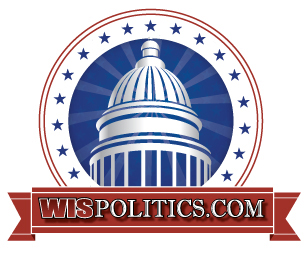Roaring state economy presents some worries in labor, housing markets

April 10, 2022
Two reports from the University of Wisconsin highlight the good and potential bad of the state’s currently roaring economy.
The mixed outlook reflects similar worries on the national level.
One report focuses on the state’s labor shortage while the other looks at the state’s soaring housing market.
— The first report, from a liberal UW-Madison think tank, shows Wisconsin’s labor force participation rate has exceeded pre-pandemic levels.
The report from the Center on Wisconsin Strategy, or COWS, shows labor force participation in the state reached 66.4% in February 2022, compared to 66.1% in February 2020.
Meanwhile, the state’s labor force hit 3.14 million in February, marking an increase of 40,000 compared to February 2020, the report shows. But at the same time, the state’s overall employment level remains about 77,000 jobs lower than the pre-pandemic total. These figures differ because the labor force number also includes people who are seeking work.
The report also highlights how certain industries are bouncing back more quickly than others — including some that were hardest hit by the pandemic. COWS notes the leisure and hospitality industry employment remains 4.2% below where it was before the pandemic. But that’s after more than half of the workers in this industry lost their jobs in April 2020, the report authors note.
By comparison, employment in education and health services as well as state and local governments all remain more than 5% below pre-pandemic, per the report. Manufacturing employment is only 0.1% lower than before the pandemic while construction employment has recovered.
The Department of Workforce Development recently announced the state’s unemployment rate reached 2.9% in February, tying the state’s record low from March 2020.
COWS also argues that low-wage workers “need a new ‘normal’” as the state economy continues to recover. Report authors say the low unemployment rate “likely provides workers more leverage” to get higher wages and more work, but they say “stronger public policy” can help sustain these changes.
“Strong public health, accessible health insurance, and affordable and high-quality care for kids (with decently-paid providers) are ways that the state can help workers stay on the job in the ever-changing context of this global pandemic,” they wrote.
— The second report, from UW-Extension, highlights “rising concern” that another housing market bubble could be on the horizon.
“While safeguards have been put in place to prevent a repeat collapse of secondary financial markets, the potential economic pain to homeowners if history repeats itself could be significant,” wrote Steven Deller, a professor in UW-Madison’s Department of Agricultural and Applied Economics.
Using state housing data from the Federal Housing Finance Agency, he noted home prices have been escalating rapidly in recent years. While those figures illustrate the growth, collapse, and slow recovery of the housing market that began in the mid-2000s, Deller says they also suggest a similar scenario could play out in the near future.
While some areas of Wisconsin such as Eau Claire have seen a steeper increase over the past five years, he noted “every market examined here” saw sharp price increases through 2021 despite the economic challenges of the pandemic. That includes Fond du Lac, Janesville, Beloit, La Crosse, Madison and Milwaukee.
“The strong growth over the past few years coupled with the spike in 2021 is not only evidence of shortages of houses on the market, but also the start of another housing bubble,” he wrote. “While the growth the rate in the last quarter of 2021 slowed, the sharp increase in housing prices across Wisconsin are further evidence of challenges with the housing market.”
The Capitol Report is written by editorial staff at WisPolitics.com, a nonpartisan, Madison-based news service that specializes in coverage of government and politics, and is distributed for publication by members of the Wisconsin Newspaper Association.










